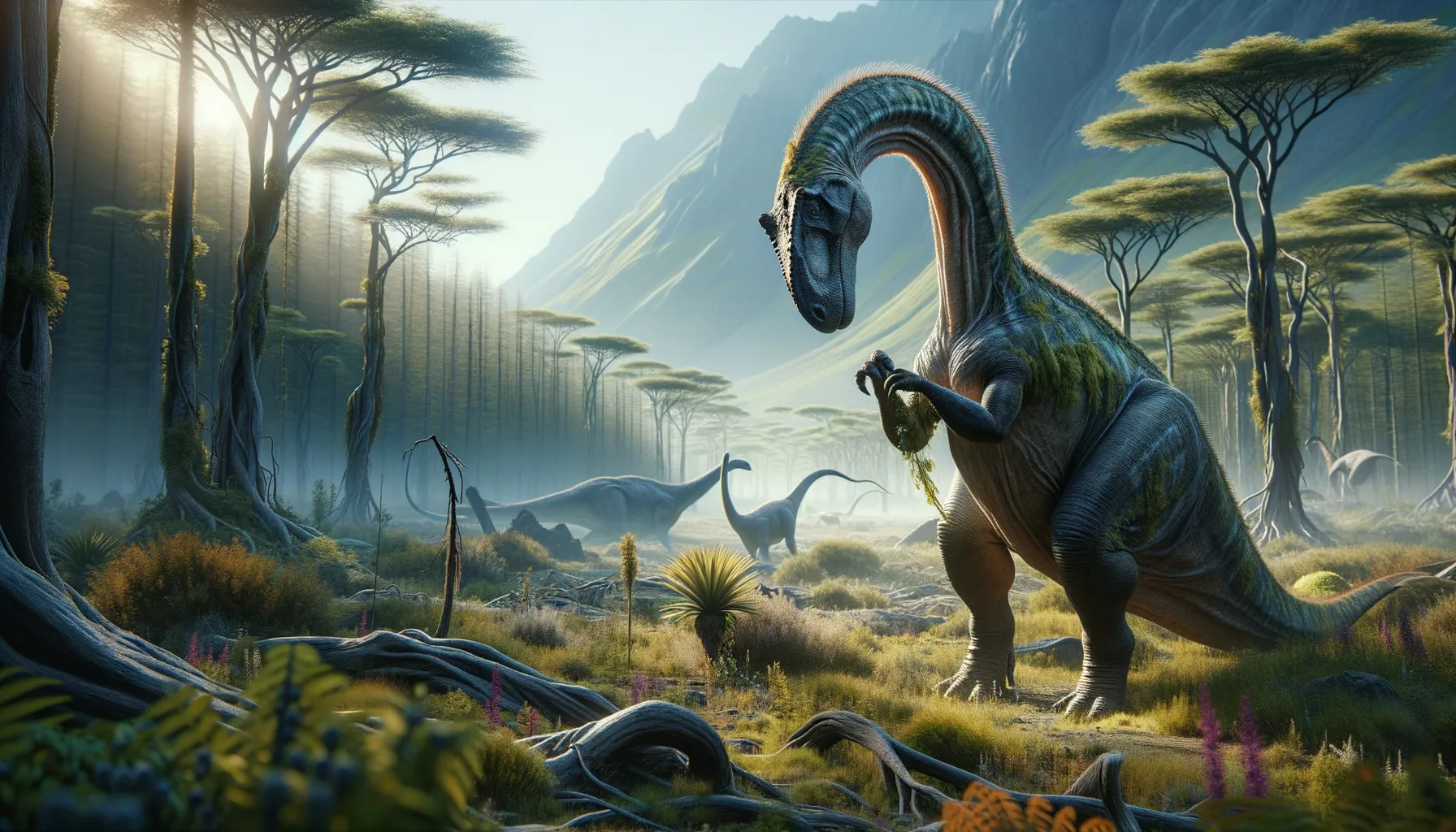
Rayososaurus
Majestic giant of ancient Argentine plains.
Period
Cretaceous
Length
Measured up to 40 feet in length.
Height
Stood approximately 12 feet tall at the hips.
Weight
Estimated to weigh around 5 tons.
Rayososaurus was a large, slow-moving herbivorous dinosaur known for its long neck and tail, reflecting its typical sauropod physique. Predominantly found in Argentina, this dinosaur lived during the Cretaceous period approximately 100 million years ago. Its notable skeletal remains contribute significantly to our understanding of the diversity and spread of sauropods across ancient Gondwana.
Diet
Rayososaurus was herbivorous, feeding primarily on conifers and other leafy vegetation. Its long neck allowed it to reach high into the trees to access leaves that other herbivores couldn’t reach easily.
Hunting
Rayososaurus did not hunt as it was not a carnivore. It likely spent much of its time grazing for food, moving between different areas to find sufficient vegetation to sustain its large body mass.
Environmental challenges
As a large dinosaur, Rayososaurus faced challenges in finding enough food to support its massive structure, especially during periods of drought or scarce vegetation. It needed to stay hydrated and might have traveled long distances to find water sources. Competing with other large herbivores for limited resources was another challenge, requiring constant mobility and adaptation to various plant availability in its habitat.
Speed
Rayososaurus likely moved slowly due to its large size.
Lifespan
Estimated to live several decades.
First discovery
Discovered in Argentina in the 1990s.
Fun Facts
- Rayososaurus was a kind of dinosaur known as a sauropod, which means it had a long neck and tail.
- This dinosaur lived during the Cretaceous period, around 100 million years ago.
- Rayososaurus's fossils were first discovered in Argentina, giving us clues about where it roamed.
- Despite its large size, Rayososaurus is thought to have been a herbivore, only eating plants.
- The name Rayososaurus is derived from the Rayoso Formation, where its fossils were found.
- Rayososaurus is related to another dinosaur called Rebbachisaurus, showing they had similarities in their skeletons.
- This dinosaur is an example of how scientists piece together history from just a few fossil bones.
Growth and Development
Rayososaurus grew rapidly in its early years, which is common among large sauropods to avoid predation. Its long neck and tail developed as key features early on, aiding in its survival and feeding. Over time, it reached massive sizes, indicative of a lengthy maturation process associated with its considerable lifespan.
Habitat
Rayososaurus inhabited what were once expansive floodplains and forests of present-day Argentina. The environment included lush greenery and bodies of water, which were vital for its sustenance. This area was part of the larger Gondwana landmass, offering a variety of terrains and microhabitats suitable for a large herbivore.
Interaction with other species
Rayososaurus coexisted with other sauropods and theropods in its region, likely competing for food with other large herbivores. Predators of the time might have targeted younger individuals, while adult Rayososaurus might have been too large for most predators to attack. Social behaviors such as group grazing might have helped in warding off predators.
Natural lifespan
Rayososaurus likely had a natural lifespan of several decades, akin to other large sauropods.
Reproduction
Like other sauropods, Rayososaurus likely laid eggs in clutches. Egg-laying in communal nests might have been a strategy to increase offspring survival. Little direct evidence exists, but fossilized nests suggest they followed similar reproductive strategies to better-known sauropods.
Social behaviour
Rayososaurus might have been social, moving in herds to protect themselves against predators and to aid in finding food sources. This behavior might have included cooperative feeding strategies, utilizing their collective size as a deterrent against predators.
Fossil locations
Fossils of Rayososaurus have been primarily found in the Rayoso Formation of Patagonia, Argentina. These discoveries provide key insights into the distribution and evolution of sauropods across Gondwana during the Cretaceous period.
